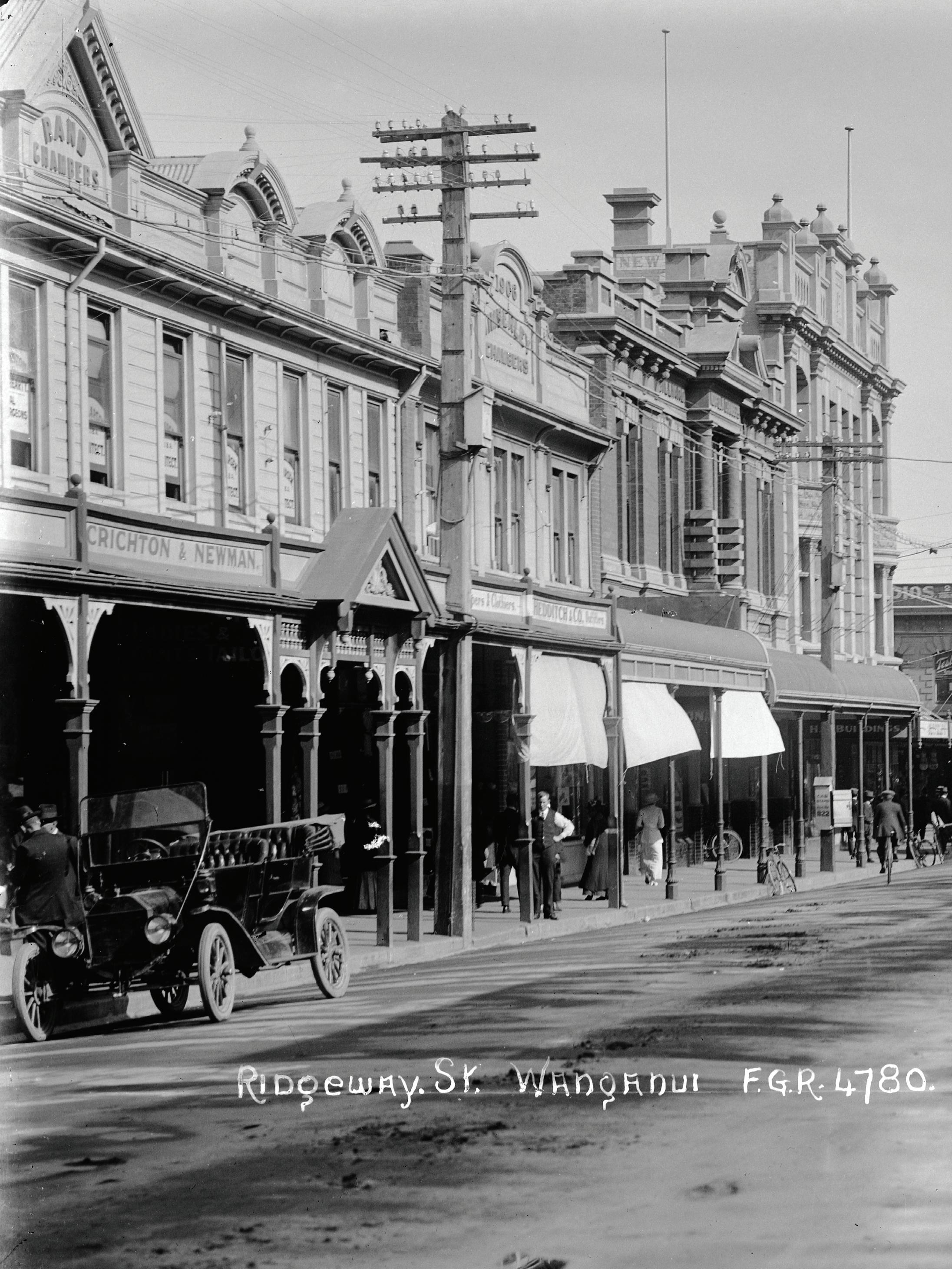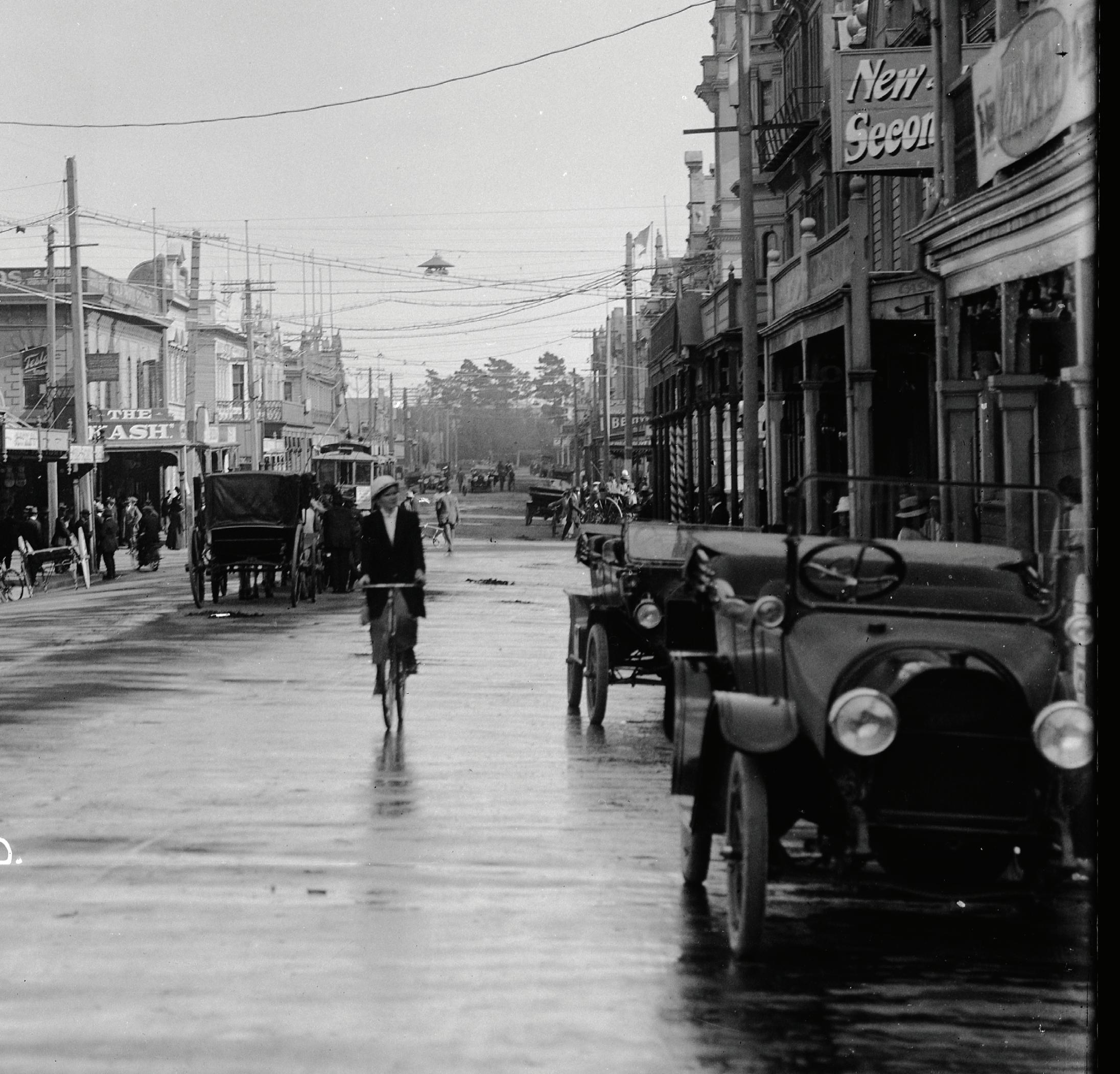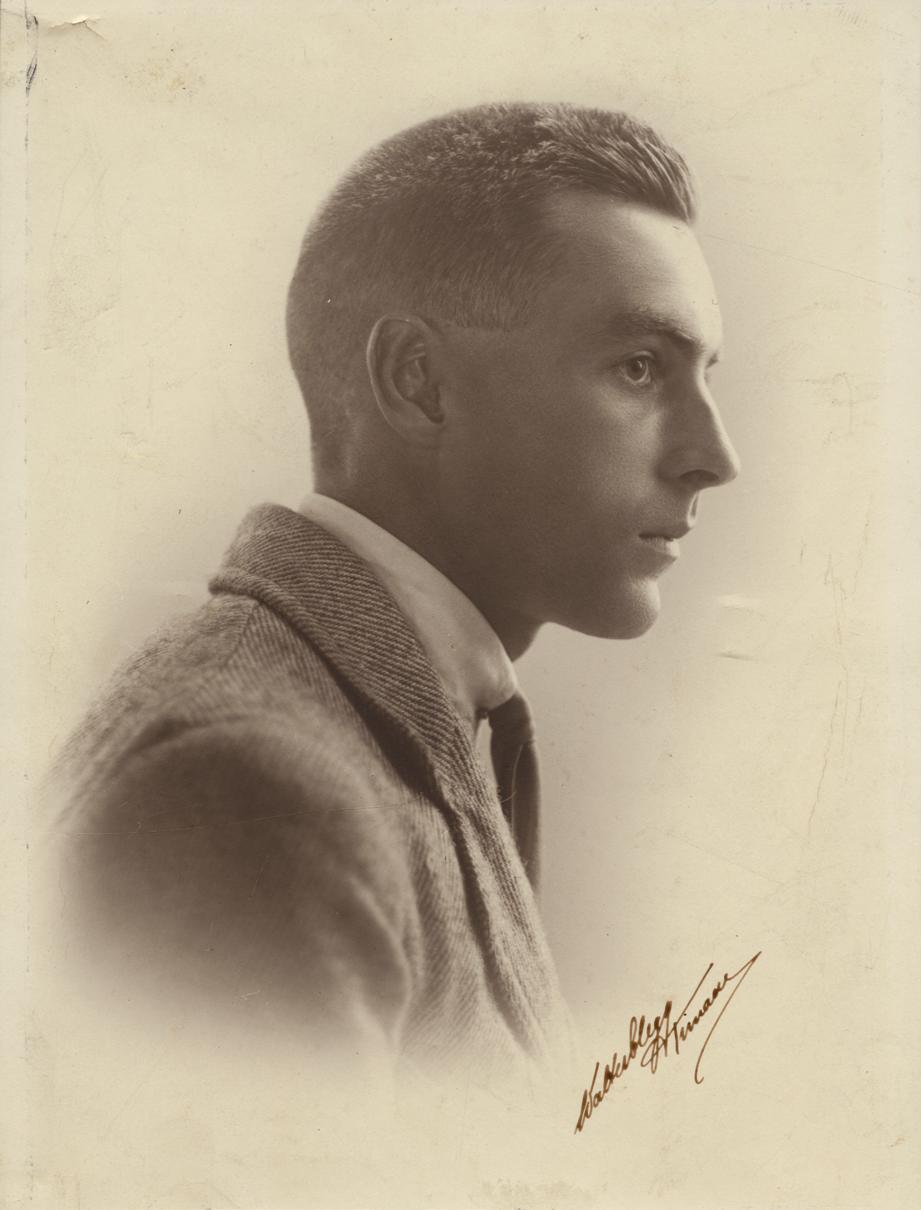
8 minute read
1. Ridgway St

Ridgway Street, Whanganui, looking south towards Cooks Gardens, photographed around 1915. Charles Mackay’s legal offi ce was in Norfolk Chambers (the building in the middle of the block on left). He shot D’Arcy Cresswell in a different offi ce, on the same side of the street but behind where the photographer would have stood to take this shot. Auckland Libraries Heritage Collection, 35-R1684
Advertisement






It is five minutes to one on a Saturday afternoon in May 1920 in the town centre of Whanganui.1 Engineer Colin Cameron is standing on the back of a lorry when he hears shots being fired from the first floor of a two-storey wooden building on Ridgway Street, the town’s main commercial thoroughfare, which runs parallel to the Whanganui River.
A chair then crashes through a window and lands on the pavement, scattering glass. Cameron looks up at the window, where a man appears. This is Walter D’Arcy Cresswell, a 24-year-old returned soldier who lives in the South Island town of Tīmaru but is in Whanganui visiting relatives. Cameron and his father George, standing nearby, hear Cresswell shout, ‘Help! I have been shot!’, and see him struggling with an older man. This is 44-year-old barrister Charles Mackay, the mayor of Whanganui. The pair disappear from view and a further four or five shots are heard.
Colin Cameron enters the building and runs up the stairs with Sydney Sykes, a labourer. The stairs open onto a landing. To the right is an open corridor with a wooden balustrade. There is a door near the landing and another off the corridor, from which Cresswell emerges, holding a revolver. Sykes takes it from him.
‘Mr Mackay has shot me,’ Cresswell tells Cameron and Sykes. ‘Get a car and take me to a doctor.’
Mackay appears behind Cresswell. ‘I accidentally shot him while I was demonstrating an automatic revolver,’ he says.
With Mackay and Sykes following, Colin Cameron helps Cresswell halfway down the stairs. He and his father then get Cresswell to the bottom of the stairs, which open directly onto the street. There they lay him down on the footpath, Sykes and Colin Cameron supporting his head. George Cameron, who has a notebook, is trying to copy down what Cresswell is saying. Mackay remains on the stairs about a yard away, between Sykes and George Cameron.
‘I am dying,’ Cresswell tells Cameron. ‘I feel I am going. Give my love to my mother.’
‘If you think you are dying you had better tell us all you know,’ says Sykes.
‘I discovered a scandal and Mr Mackay shot me,’ Cresswell replies.
‘I accidentally shot him while showing him the revolver,’ says Mackay.
‘It was not an accident. I was shot,’ Cresswell replies, and then lapses into unconsciousness.
When police constables John McMullin and David Wilson arrive, Mackay tells them the shooting was an accident and gives himself up. After handing the gun to McMullin, Wilson goes upstairs to Mackay’s office to phone for a doctor. An ambulance arrives and takes Cresswell away. Sykes also heads upstairs to Mackay’s office, where he finds the mayor putting papers into a safe and turning the key. Sykes leaves the office and McMullin goes upstairs, where he meets Mackay on the landing.
The pair go back into the office, which is in a state of disarray. Mackay’s high-backed chair is lying on the floor, the window behind his table, which faces onto the street, is broken, and there is shattered glass on the floor. Mackay explains that he was showing Cresswell his revolver when it went off by mistake. The young man then fell against the window and broke the glass, he says. When McMullin asks, ‘How did the chair get outside?’, Mackay replies, ‘What chair?’
McMullin instructs Mackay to lock up his office, then hands him, and the revolver, over to another police officer, Sergeant James Reid, who takes Mackay to the police station, around the corner from Ridgway Street.
At the station, Mackay again insists, this time to Senior Sergeant Thomas Bourke, that the shooting was an accident, and says he fears for Cresswell’s life: ‘Sergeant, I shot a young man through the chest. I believe he will die.’ Bourke tells him the Camerons reported hearing the disturbance in the office before the shots were fired, and then seeing the chair falling from the window onto the street.
Soon after this, Bourke goes to Mackay’s office, where he finds five photographs of naked women in a locked drawer of the office table. He searches unsuccessfully for the resignation letter Mackay told him he had written. He finds four revolver bullets: two in Mackay’s chair, one at the back of some books and a bookcase on a wall and one at the back of the roll-top desk. One bullet has gone through the wall into the next room and the other into some books.
Back at the station Bourke charges Mackay with the attempted murder of Walter D’Arcy Cresswell.
‘I understand, Sergeant,’ is Mackay’s reply.
In Whanganui, the first report of the shooting appeared two days afterwards: A PAINFUL SENSATION. YOUNG MAN SERIOUSLY WOUNDED. MR C. E. MACKAY UNDER ARREST.
A painful sensation was caused on Saturday afternoon when it became known that a returned soldier, Walter D’Arcy Cresswell, aged 24 years, had been admitted to Wanganui Hospital suffering from a bullet in the right breast and Mackay, the Mayor, was implicated in the affair.2
The brief Wanganui Chronicle article summarised the eyewitness accounts of the shooting and Mackay’s arrest and remand in custody. It also noted that Cresswell’s parents had arrived from Tīmaru the previous day, and that their son was progressing satisfactorily in Wanganui Hospital. The bullet, believed to be in his lung, had not been located and an operation would probably be necessary. Updates about Cresswell’s condition — steadily improving — were the only
RIGHT Charles Mackay, photographed in 1919. Whanganui Regional Museum, 1986.51.11


LEFT Walter D’Arcy Cresswell, photographed in 1921, a year after the shooting. Alexander Turnbull Library, PAColl-5543-05
news reported about the case, as both Whanganui newspapers were observing a suppression request from Mackay’s lawyers.
Newspapers elsewhere, such as the Te Puke Times, were more forthcoming:
A WANGANUI SENSATION MAYOR OF TOWN ARRESTED RETURNED SOLDIER WOUNDED Wanganui, May 15
The greatest and most painful sensation Wanganui has experienced for some considerable time, was the shooting affray in Ridgway Street this afternoon, when Mr C. E. Mackay, solicitor and Mayor of the borough, shot and badly wounded a returned soldier named Darcy Cresswell who hails from Timaru. The police are very reticent over the affair, but it is stated that an altercation took place in Mr Mackay’s office, and the crashing of a chair through a window preceded the report of a gun.3
Although the facts of the case were ‘shrouded in mystery’, reported the tabloid N.Z. Truth, it was ‘known that Mackay entertained the wounded man at dinner at a local hotel’ the week before the shooting, and that the pair had had a big fight before the shot was fired.4 The paper also mentioned Mackay’s row with the Returned Soldiers’ Association (RSA) over the visit of the Prince of Wales, the future Edward VIII, 12 days earlier, on 3 May, and noted that the mayor had been in poor health since an accident the previous year.
Cresswell had arrived at Wanganui Hospital with a small bullet wound in the right side of his chest, about level with his heart. Although his condition was pronounced serious, he improved rapidly, according to Medical Superintendent Dr Herbert Hutson.5 Cresswell
was unable to appear in court to give evidence, but was well enough to give the police a statement.6
Exhibit B in the eventual case Police v. C. E. Mackay is a three-page typed document, recording Cresswell’s account of events from when he arrived in Whanganui on Monday 10 May until the shooting a few days later. Cresswell apparently dictated the statement from his hospital bed but did not, as was normal police practice when there was a risk of a witness not surviving, sign or date it. Had he been physically unable to do so, there would normally have been a signed note from an inspector or a ‘professional’ person explaining the absence of a signature. Cresswell was also able to draw a sketch plan of Mackay’s office.
On 26 May, the day before the trial, Mackay asked to see Whanganui police inspector Charles William Hendry, who, arriving at the gaol, found Mackay with his lawyer, William Treadwell, the Whanganui borough solicitor.7 Hendry handed Treadwell Cresswell’s statement for Mackay to read. After speaking with Treadwell in private, Mackay returned 20 minutes later, having, at the inspector’s suggestion, initialled each page and added this endorsement: ‘I have read the above statement and as far as it relates to my own acts & deeds I admit the statement to be substantially true.’8
The next day — 12 days after the shooting — Inspector Hendry read Cresswell’s statement at Mackay’s trial for attempted murder.



